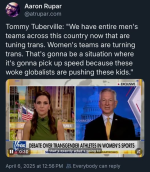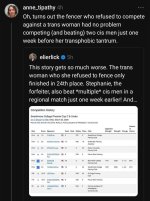And here you thought that RuPaul was somehow the first
 dpSsonoetr03i a2tPg6p1A208u 531t2:12g1a2il5Mmgh38aarc3c 07l
dpSsonoetr03i a2tPg6p1A208u 531t2:12g1a2il5Mmgh38aarc3c 07l ·
https://www.facebook.com/#
In the twilight of the Roaring Twenties, a curious and dazzling phenomenon lit up the speakeasies, cabarets, and nightclubs of America’s urban underworld: the Pansy Craze. For a brief, glorious moment—between the end of Prohibition and the rise of the Hays Code’s censorship clampdown—the queers took center stage. Literally.
The Pansy Craze was a cultural moment in the late 1920s and early 1930s when openly gay performers—referred to as "pansies" in the slang of the time—became unexpected stars of nightlife entertainment, particularly in New York, Los Angeles, and San Francisco. The term “pansy” was both pejorative and empowering, depending on who was saying it and how. But these performers, many of whom were effeminate men or gender nonconforming in some way, were magnetic. They turned queerness into an act, a rebellion, a razzle-dazzle spectacle. And the crowds couldn’t get enough.
Imagine it: A smoky basement club, gin flowing under the counter, and the crowd pressed in tight as a slender, sharply-dressed man in a satin tuxedo and rouge sings torch songs with a wink and a knowing smirk. He might banter with the audience in a nasal drawl, lacing his monologue with double entendres, swishing and swooning with deliberate flair. And the audience? They weren’t gay—at least not openly. They were a mix of flappers, bohemians, slumming socialites, and businessmen looking for a thrill. Watching the "pansy" perform was like watching a forbidden fruit dance—titillating, transgressive, and in fashion.
This era birthed legends like Gene Malin, one of the first openly gay performers in American entertainment, who headlined clubs in drag and out, dazzling the crowd with biting wit and bold sexuality. Malin wasn’t hiding behind coded language—he strutted through the front door in full bloom, proud and polished. In a world where homosexuality was criminalized, his very presence was revolutionary.
Another notable figure was Karyle Norman, known as “The Creole Fashion Plate,” whose sultry voice and extravagant gowns earned him acclaim on the vaudeville circuit. Then there was Bruz Fletcher, a satirical cabaret performer whose songs were as biting as they were beautiful, often lampooning the hypocrisy of polite society with a wink to the crowd that got it.
The Pansy Craze wasn’t just limited to men. Drag kings and gender-bending women took the stage as well, especially in Harlem, where queer nightlife thrived in clubs like the Clam House, frequented by luminaries like Bessie Smith and Gladys Bentley—a tuxedo-wearing, piano-playing lesbian who brought down the house with her booming voice and bawdy lyrics.
It was a moment when queerness was briefly commodified and celebrated—not entirely accepted, but undeniably in vogue. There was a kind of unspoken contract: the straight audience got to peek behind the curtain of the so-called “degenerate,” and the queer performers got visibility, applause, and—if they were lucky—a paycheck. Of course, it didn’t last. The Great Depression brought with it a shift toward conservatism, and the Pansy Craze was soon snuffed out by stricter policing, moral outrage, and eventually Hollywood's infamous Production Code, which scrubbed gay characters (and actors) from the silver screen and shoved them back into the closet.
But the legacy lingered.
For those of us who remember the coded winks of Paul Lynde, the flamboyant brilliance of Liberace, or even the sly subversion of Charles Nelson Reilly on daytime television, there’s a direct line back to those smoky clubs of the 1930s. The Pansy Craze laid the groundwork for future generations of queer performers. It showed that our presence could be magnetic. That queerness could sell out a nightclub. That we had style, wit, and something to say—long before Stonewall, long before RuPaul.
It’s easy to forget that queerness was never truly hidden; it just shimmered in plain sight, dressed in sequins, singing torch songs under the klieg lights of a cabaret stage. And for a glorious moment, the world applauded.










